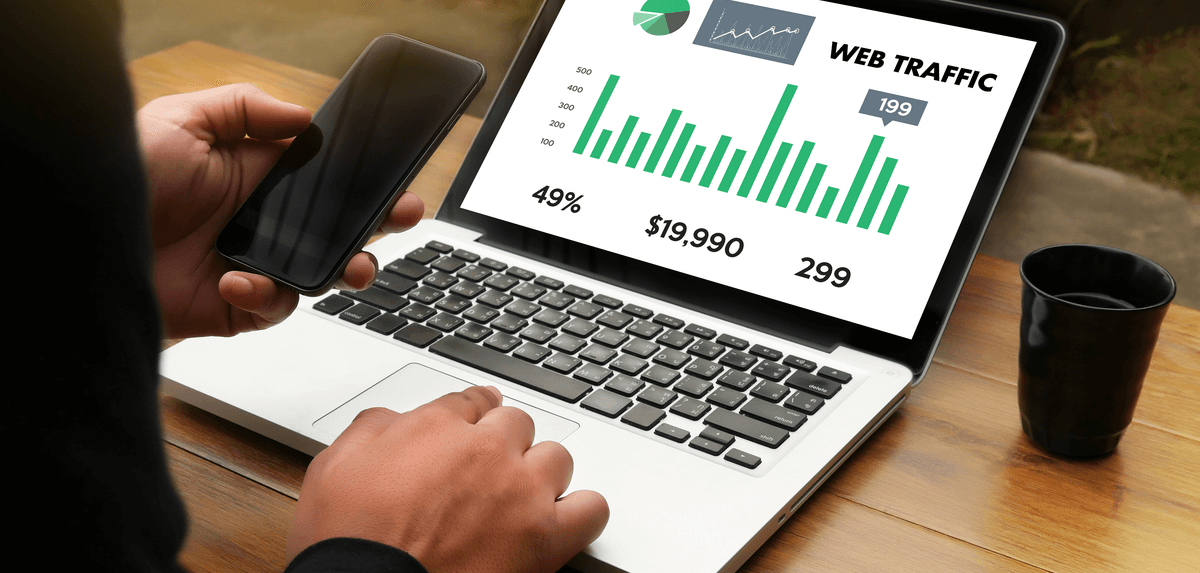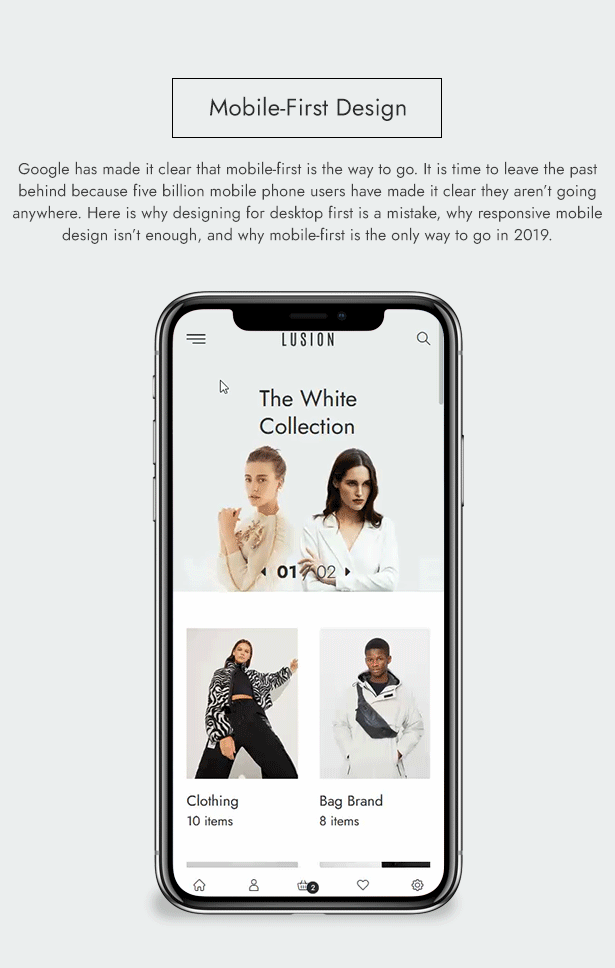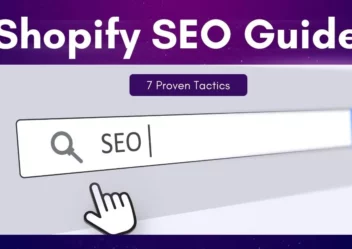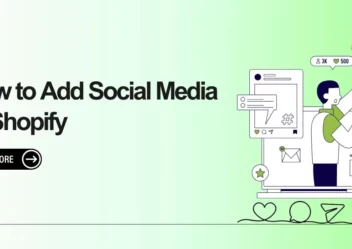4 Proven Strategies to Drive Traffic to Your Shopify Store
If you’re a Shopify store owner, you’ve probably asked yourself these questions more than once. How do I drive more traffic to my store? What strategies work to attract more customers online? How can I use the power of the Internet to boost my visibility and my sales?
You’re not alone. With over 4.6 million stores using Shopify nowadays, standing out in the crowd can be tough. But the good news is that there are proven techniques you can use to bring more visitors to your store and turn them into paying customers.
In this post, we’ll walk through practical, actionable strategies to drive traffic to your Shopify Store, all with a focus on results.
Claue – Clean and Minimal Magento Theme
We provide an amazing Magento theme with fast and responsive designs. Let’s find out!
How to Successfully Market a Shopify Store?

Marketing a Shopify store is about more than just getting people to visit your website. It’s about attracting the right kind of visitors – those who are actually interested in what you’re selling and likely to make a purchase. Some traffic sources will bring in highly engaged potential buyers, while others might bring volume but little value.
For instance, if you’re selling quirky office supplies targeted at young professionals, LinkedIn would likely generate better leads than Pinterest, which is skewed toward creative inspiration and DIY audiences.
The real secret to success is to double down on what works best for your specific niche. And that varies from business to business. What’s considered high-quality traffic for one store might be completely irrelevant for another. That’s why it’s essential to explore multiple tactics, test what performs best, and build from there.
Below, we’ll walk through several proven marketing tactics – each analyzed by the type of return they provide (short or long-term), the effort required, cost, time to see ROI, and the potential to drive traffic to your Shopify store.
- Tactic type: Whether the idea is a short-term or long-term traffic creator, Short-term tactics often see results faster but require more maintenance or reinvestment. Long-term tactics take longer to see results but demand little to no maintenance.
- Effort: How much time, skill, or experience will you have to put into the tactic?
- Time to return on investment (ROI). Whether you invest time, effort, or money into a traffic-driving tactic, it will take days, weeks, or months to see that investment improve traffic and sales.
- Cost. The upfront budget you’ll need to run the campaign
- Traffic potential. The total amount of traffic that could be sent to your Shopify store.
How to Drive Traffic to Your Shopify Store?
No matter how great your products are, if no one sees them, you won’t make sales. That’s why driving consistent, high-quality traffic is one of the most important parts of growing your online business.
1. Content Marketing to Drive Traffic to Your Shopify Store

If you’re a newer Shopify business trying to compete with more established brands – or just looking to build greater brand recognition – content marketing is one of the most powerful tools in your toolbox. Content marketing provides value first, building trust and authority over time.
What Is Content Marketing?
Content marketing refers to the creation and distribution of valuable, relevant, and consistent content that attracts your target audience. This could be blog posts, videos, podcasts, infographics, or even customer-generated content. The primary goal isn’t to get an immediate sale. Instead, it’s to get your brand on your audience’s radar, offer helpful insights, and nurture interest in your products.
Over time, this kind of content builds authority, drives organic traffic, and positions your Shopify store as a go-to resource in your niche. In fact, businesses that blog see 55% more website visitors and 67% more leads than those that don’t.
Let’s take a closer look at some specific content marketing strategies you can use to boost your Shopify store traffic.
Keep Content Fresh for Better SEO
Search engines love updated, relevant content. One of the simplest ways to boost organic traffic is by refreshing your existing content. This strategy – known as “content freshness” – involves updating older blog posts, removing outdated info, and adding new sections to reflect recent trends or changes in your products.
Don’t stop at blog posts, product pages can also be SEO. For example, you can take great customer reviews and weave them into your product descriptions, making your listings more engaging and credible. Google favors dynamic content, and even small updates can improve your rankings.
Start a Podcast to Build Connection and Drive Traffic
Podcasting is a growing channel with massive potential. 52% of Americans have listened to a podcast, and 33% listen regularly each month. That’s a huge audience, many of whom are multitasking professionals or commuters looking for interesting, useful content.
Launching a podcast related to your niche or brand story gives you the opportunity to connect with your audience on a deeper level. It builds trust, gives your brand a voice, and brings listeners directly to your Shopify store. Here’s how it helps:
- Brand Discovery: People may discover your store after enjoying your podcast.
- Customer Relationships: Provide value beyond products by sharing insights, interviews, or behind-the-scenes stories.
- SEO Boost: By transcribing episodes and posting them on your blog, you gain keyword-rich content that Google can crawl.
Tip: Embed your podcast episodes directly into your store’s blog and include links to featured products or promotions in the show notes.
Leverage YouTube to Drive Visual Engagement
YouTube is the second-largest search engine in the world. A well-executed video strategy can bring a flood of qualified traffic to your Shopify store. Whether it’s tutorials, product demos, customer testimonials, or behind-the-scenes footage, video helps people understand and trust your brand faster.
Consistent publishing is key. Brands that post new videos weekly tend to see greater engagement and long-term growth. Here’s how to use YouTube for traffic:
- Add store links in descriptions and video cards
- Use YouTube ads to reach broader audiences
- Collaborate with creators to feature your products
If you’re starting from zero, focus on videos that answer common customer questions or solve problems related to your niche. For example, if you sell eco-friendly kitchenware, a “How to Build a Zero-Waste Kitchen” video could attract highly targeted traffic.
2. Optimize Your Shopify Website for Better Traffic and Conversions
Driving traffic to your store is one thing – keeping visitors engaged once they land on your site is another. A well-optimized Shopify website can make visitors more likely to make a purchase. Here’s how to make sure your site is working for you, not against you.
Speak Directly to Your Target Audience
Great marketing starts with clear communication. If you’re catering to a specific niche – like eco-conscious moms, pet lovers, or tech-savvy college students – speak their language. Use tone, references, and content that resonate with that particular group. This personal touch creates a stronger emotional connection and builds trust.
Create content that’s fun, informative, and authentic. If you sell sustainable skincare, for example, your product descriptions and blog posts should reflect the values of your eco-conscious audience. Don’t overlook the basics: clear writing and zero typos go a long way in presenting your brand as polished and professional.
Photography is King: Show, Don’t Just Tell
We live in a visual-first world. High-quality product photography isn’t optional anymore – it’s essential. Your visitors need to see what they’re buying in detail. According to a recent Google survey, 84% of US smartphone shoppers said that product photos are “very” or “extremely” influential in their purchasing decisions.
Use multiple angles, zoom-ins, lifestyle shots, and even short videos where possible. The more accurately and beautifully you present your products, the higher your chances of converting browsers into buyers. Consider investing in professional photography or at least using a consistent, well-lit setup to keep your store looking polished.
Think Mobile-First: Optimize for All Devices

With mobile shopping at an all-time high, your Shopify store must be optimized for smartphones and tablets. Over 72% of e-commerce sales were made on mobile devices, and that number continues to grow. If your store doesn’t load properly or is hard to navigate on a small screen, potential customers will bounce in seconds.
Make sure your theme is responsive and fast. The Lusion Shopify Theme, for example, is known for its clean design, mobile-friendly layout, and optimized performance across all devices. Test your store regularly on different screen sizes. Your product pages, search bar, shopping cart, and checkout process should work just as smoothly on a phone as on a desktop.
Speed also matters – 40% of shoppers will abandon a website that takes more than 3 seconds to load. Use compressed images, clean up unused apps, and consider a mobile speed test to improve performance.
3. Tap into Connections and Spy on Competitors to Guide Your Strategy

One of the smartest moves you can make when launching or growing a Shopify store is to learn from others who are already doing it well. Instead of starting from scratch, reverse-engineer what’s already working for your competitors. Where are they getting their traffic? Which platforms are sending them the most visitors? When you tap into these insights, you can prioritize your marketing efforts with more confidence and fewer missteps.
Learn from Your Competitors’ Traffic Sources
Before you start spending money on ads or creating content, take some time to research your competitors’ traffic channels. This gives you a solid head start. For instance, if your competitor is thriving thanks to Facebook traffic, you can bet that’s where your ideal audience is hanging out, too.
Helpful tools for this are Similarweb, SEMrush, or Ahrefs, which offer competitor traffic insights. Here’s a simple way to use this strategy:
- Search your competitor’s domain on a traffic analysis tool.
- Look for the section that shows “Upstream Sites” or “Referral Traffic.”
- Identify which platforms are sending the most visitors just before they land on the competitor’s site.
If Google is the top referral, you’ll want to prioritize SEO and Google Ads. If most traffic is coming from Facebook, consider launching targeted Facebook ad campaigns. And if a niche blog is driving traffic their way, think about reaching out to that blog for partnerships, guest posts, or influencer shoutouts.
Use Connections to Amplify Reach
Don’t overlook your existing network. Your personal and professional connections, friends, colleagues, and social media followers. They can help spread the word, especially during the early stages of your Shopify store launch.
Here are a few easy ways to tap into your network:
- Announce your store on your personal social media accounts.
- Ask trusted connections to share your store with their followers.
- Send a launch email to your existing contact list with a special promo or early access offer.
Word of mouth is powerful. 92% of consumers trust recommendations from people they know. A few shares or mentions from people in your circle can bring valuable, warm traffic to your site, and possibly your first few customers.
4. Boost Shopify Traffic with Referral Marketing

If you’re still wondering how to drive more traffic to your Shopify store without breaking the bank, referral marketing might be your secret weapon. It’s a simple yet incredibly effective strategy: get your existing customers to spread the word for you.
Why Referral Marketing Works?
Referral marketing leverages one of the oldest forms of advertising, word of mouth, but with a modern twist. And it’s not just a nice-to-have; it works. According to Nielsen, 82% of shoppers say a recommendation from friends or family plays a major role in their buying decisions. Think about your own habits, how often have you bought something just because someone you trust raved about it?
And here’s the kicker: customers acquired through referrals don’t just convert better, they’re also more valuable over time. Studies show that referred customers have a 27% higher lifetime value than non-referred ones. That means more revenue, more loyalty, and better return on your marketing efforts.
How to Set Up a Referral Program on Shopify?
Start with a simple referral program that rewards existing customers for sending new shoppers your way. Shopify offers several apps to help you launch a program quickly, like ReferralCandy, Smile.io, or Yotpo Loyalty & Referrals.
Your referral system can be as straightforward as:
- “Get $10 when a friend makes their first purchase.”
- “Give 20%, Get 20%.”
- “Refer 3 friends, get a free gift.”
Keep it clear, easy to use, and rewarding enough to be worth sharing.
Real-World Success: The Dropbox Example
If you need proof that referral programs work, just look at Dropbox. They skyrocketed from 100,000 users to over 4 million in just 13 months. All thanks to a simple referral system that rewarded both the sender and the receiver with bonus storage space. The principle is the same no matter what you sell: make it worth your customers’ while to promote your store.
Make Sharing Easy
Alongside your referral program, make sure your website and product pages include easy ways for customers to share reviews, leave testimonials, or recommend your brand to others. Add social sharing buttons, encourage customer feedback, and consider displaying user-generated content to build trust.
Conclusion
These are effective strategies of how to drive traffic to your Shopify store. Besides, if you have any questions or are interested in developing a Shopify website, don’t hesitate to contact us. We are one of the leading multi-platform web development services and eCommerce website themes providers in the world. Our web development agency can help you build a successful Shopify store.
Contact US – ArrowTheme:
– Email: [email protected]
– Facebook: Facebook.com/ArrowThemeTeam
– Website: ArrowTheme.com
Read more: Shopify Bundle App: Top 10 Apps to Raise Store’s Revenues



